Female Cowbird: Notorious Nest Invaders
Updated: Apr. 25, 2023
A female cowbird is a dull looking bird with plain plumage that is easy to miss in the backyard. But there's a really important reason for that.
How to Identify a Female Cowbird
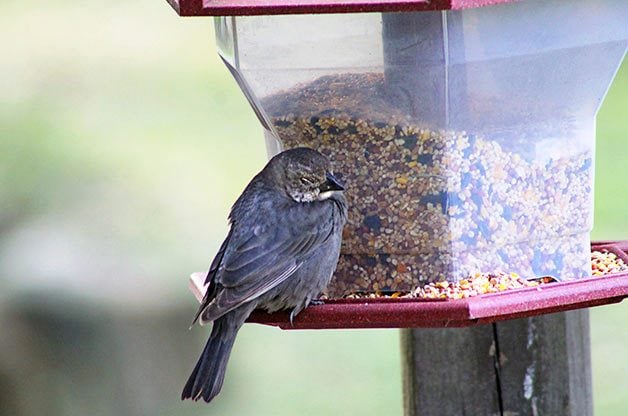
Question: “I’ve lived in this house for 20 years and I’ve never seen this bird before. What could my new yard bird be?” asks Christal Knight of Palatka, Florida.
Kenn and Kimberly: One of the most subtly colored birds in North America, lacking any distinctive pattern, the female brown-headed cowbird is a frequent source of confusion for birders. It’s easy to overlook, too. The female cowbirds have a good reason to be inconspicuous: They lay their eggs in the nests of other birds, sneaking in quietly while the nests’ owners aren’t looking.
A female cowbird is easiest to see when they come to a feeder, as in your photo. The short, thick, pointed black bill ending at a flat forehead and overall plain, dull grayish-brown look are the best field marks for recognizing them.
Male brown-headed cowbirds are more noisy and noticeable.
Check out 5 types of blackbirds you should know.
Female Cowbirds Don’t Build Their Own Nests
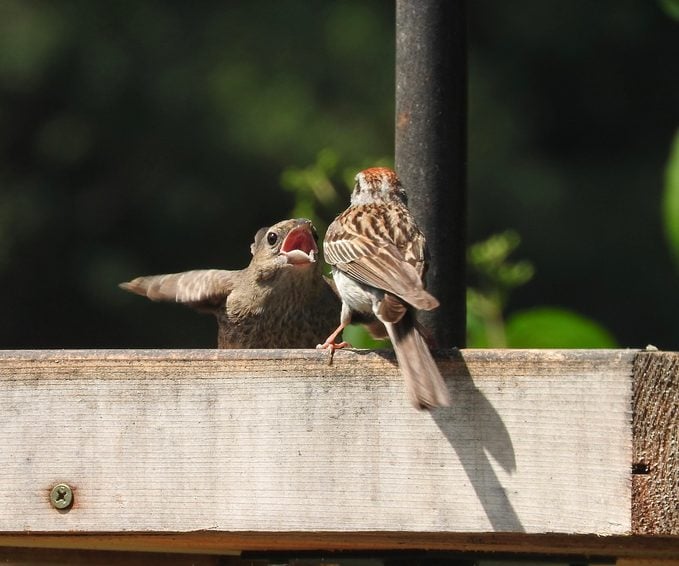
Female cowbirds are brood parasites. They don’t build nests or tend to their own young. Rather, they employ what seems to be an unfair strategy of laying eggs in the nests of other birds, such as the chipping sparrow. The adoptive adults hatch the cowbird eggs, unaware they aren’t the biological parents. These unwitting foster bird parents then care and feed the young cowbirds.
Female brown-headed cowbirds sometimes produce more than 24 eggs in a single summer. Cowbird eggs have been found in nests of more than 220 other species.
Take a quiz to see how many female birds you can identify.
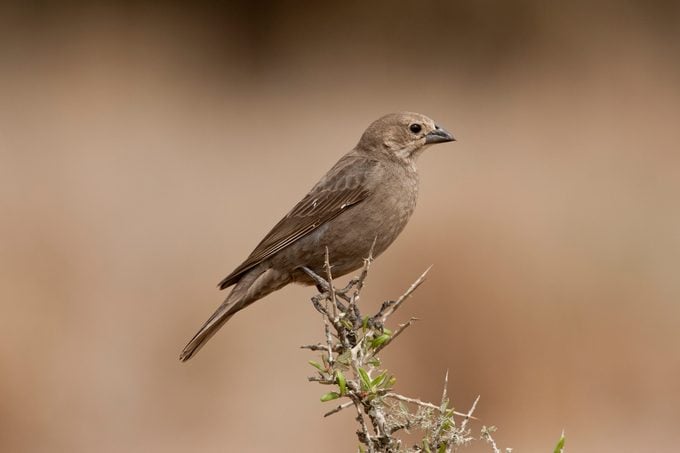
It can be tough to see a small songbird feeding the much larger young cowbird, but it’s very important not to interfere. Cowbirds are a native species, protected by law. They do create conservation challenges for some species, such as Kirtland’s warbler, but in general nature manages to maintain a fair balance.
Although cowbirds are a parasitic pain for bird parents, some birds have figured out ways to successfully deal with them. Catbirds, for example, usually recognize their own eggs and toss out any interloper eggs they find in their nests.
Learn how to keep house sparrow nests out of bluebird boxes.
Cowbird Eggs
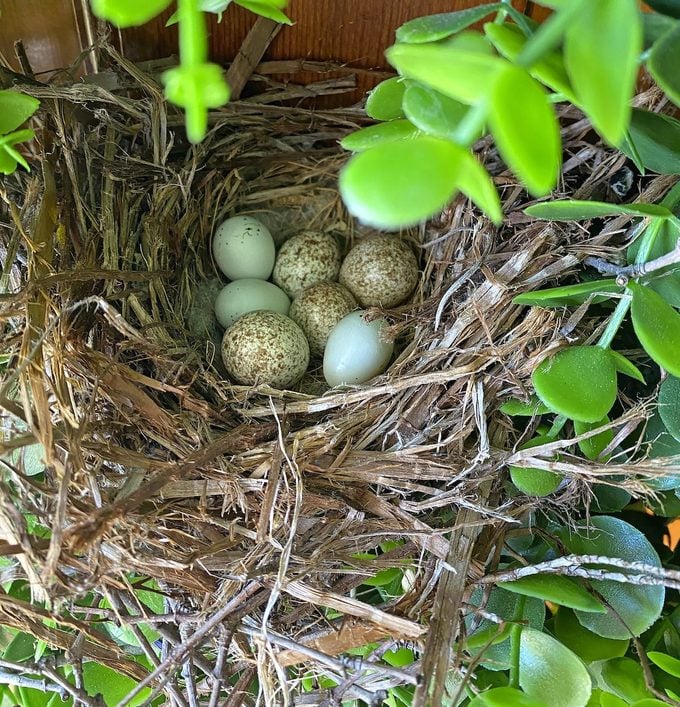
Question: “A nest on my wreath had three small blue eggs. The next day I checked and saw four spotted brown eggs in there too. What’s going on?” asks Lindsay Arnold of Stillwater, Minnesota.
Kenn and Kimberly: A house finch built the nest—for some reason, house finches seem to like nesting in hanging wreaths more than any other bird in the eastern U.S. A female house finch laid the three blue eggs, probably one per day over the space of three days.
But the spotted brown eggs are those of brown-headed cowbirds, which are brood parasites that always lay their eggs in nests of other birds, leaving the foster parents to hatch the eggs and raise the young. If the four cowbird eggs all appeared in one day, they were probably laid by four different female cowbirds.
Learn how to identify bird eggs by color and size.
Cowbird Fledglings
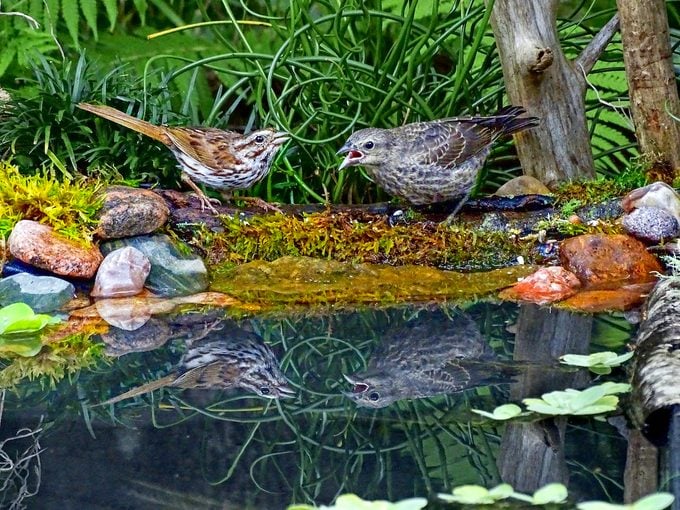
Question: “What are these birds at my reflecting pool?” asks Marianne Raft of Loudon, Tennessee.
Kenn and Kimberly: You’ve captured a dramatic behavior involving two species: an adult song sparrow caring for a young brown-headed cowbird that has just left the nest. Cowbirds always lay their eggs in the nests of other bird species, leaving the unwitting adoptive parents to hatch the eggs and feed their young. In the eastern states, song sparrows are among their frequent hosts. The young cowbird will grow up to weigh twice as much as the foster parents that are hurrying to keep it fed now. It may seem unfair to the sparrows, but cowbirds are a native species, protected by law, and we shouldn’t intervene.
What is a fledgling? See how a baby bird grows up.




















